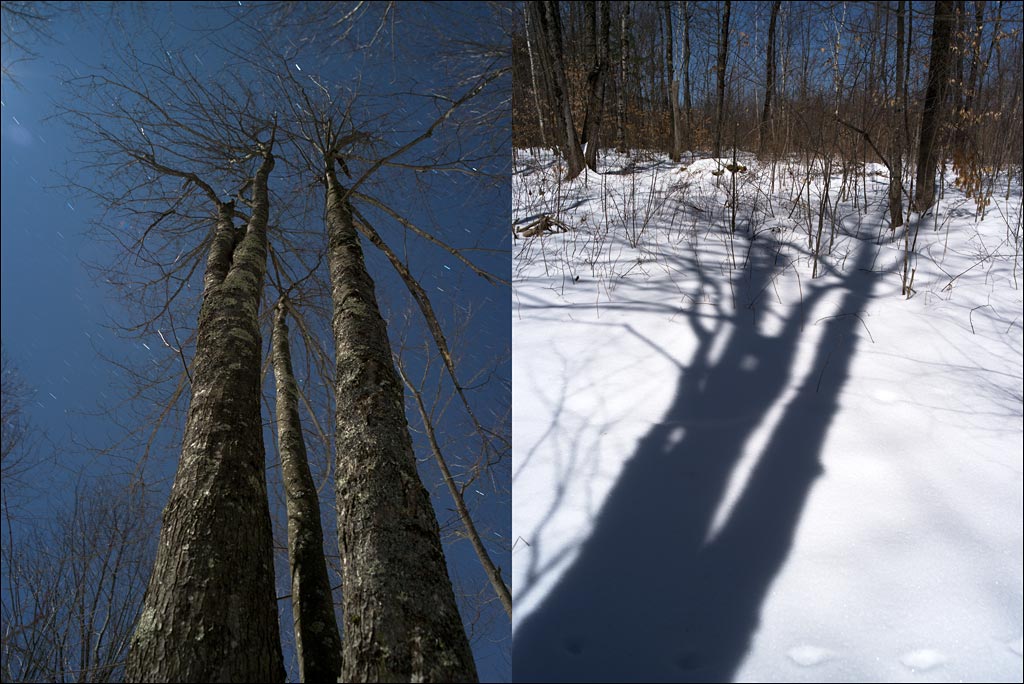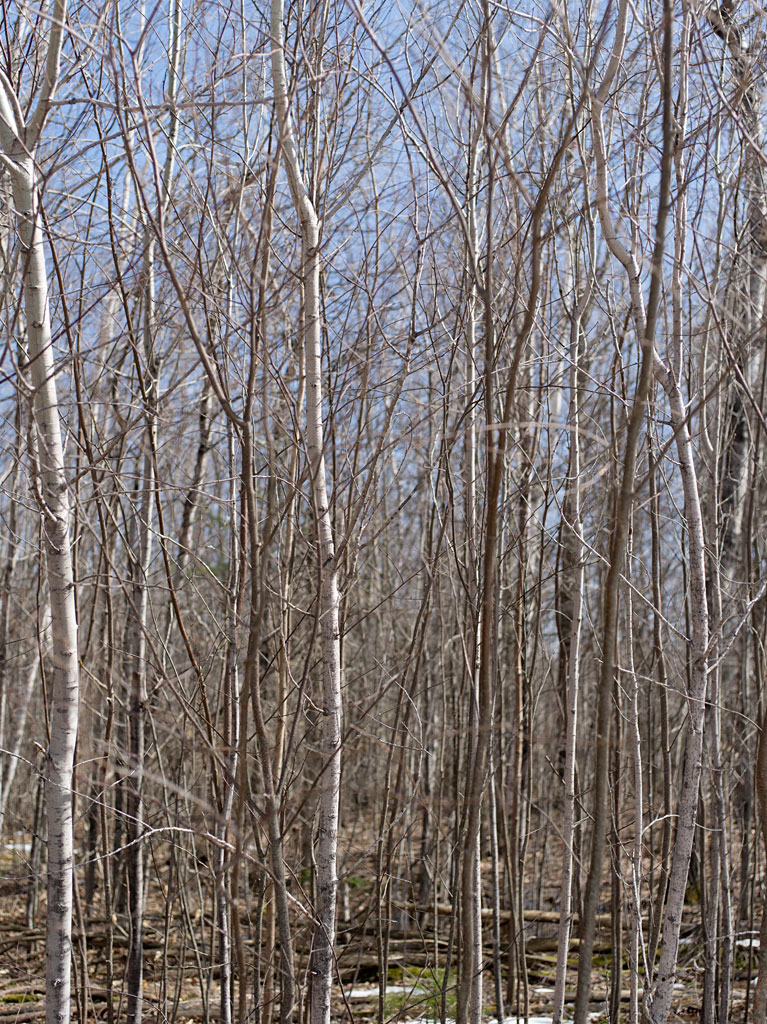 In April, heat and light come back to Maine. The forest is like an old man after a deep sleep, taking time to rise from the slumber. The humidity in the air gives a softness and transparency to the forest–light is much harsher in the dry winter air. We have a stand of saplings that are pioneering the open ground next to the forest. They are certainly happy to lose the weight of this winter’s ice storm. With their pliant wood and smooth bark, they seem to typify the spirit of spring. Click on the image for a larger view.
In April, heat and light come back to Maine. The forest is like an old man after a deep sleep, taking time to rise from the slumber. The humidity in the air gives a softness and transparency to the forest–light is much harsher in the dry winter air. We have a stand of saplings that are pioneering the open ground next to the forest. They are certainly happy to lose the weight of this winter’s ice storm. With their pliant wood and smooth bark, they seem to typify the spirit of spring. Click on the image for a larger view.
Category Archives: Life at Home
Our Newfoundland Hikari
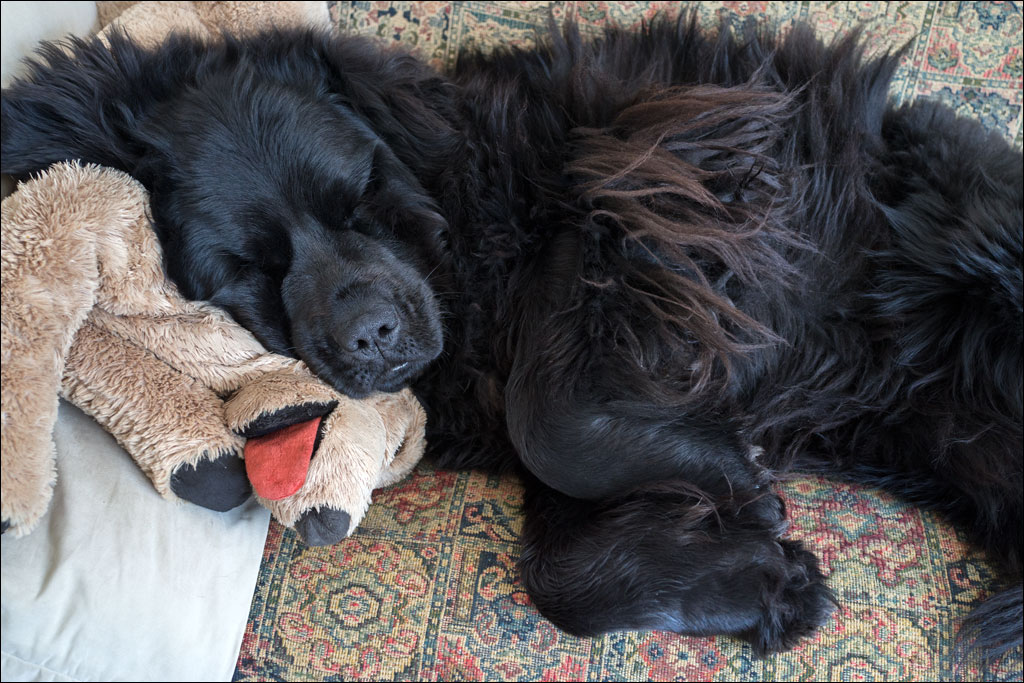 Hikari is our Newfoundland dog. She is only a 100lb/45kg—small for a Newfie. Her name Hikari (光) is the Japanese word for sunshine or light.
Hikari is our Newfoundland dog. She is only a 100lb/45kg—small for a Newfie. Her name Hikari (光) is the Japanese word for sunshine or light.
We are strict with our animals. Absolutely no dogs on the furniture. Except for the couch. And the bed. She has discovered that if she looks us in the eye and tilts her head to one side, she is more likely to get a treat. Newfoundlands are easily trained, almost as easy as their owners.
Newfies make great companions. Hikari is our second dog. Kai was our first. We rescued both of them. Newfies are not without their downside—drool on the kitchen ceiling is hard to clean and, if we could learn to spin their fur, we could have a second income. Click on the image for a larger view.
Our Mourning Doves
 It has been a very long winter in Maine this year. The snow pack still covers our garden. The Mourning Doves, Zenaida macroura, have been sitting out on our deck whenever there is a glimpse of the sun.
It has been a very long winter in Maine this year. The snow pack still covers our garden. The Mourning Doves, Zenaida macroura, have been sitting out on our deck whenever there is a glimpse of the sun.
The dove gets its name from its deep plaintive call—actually, I find the call rather calming and peaceful, more of a purring than a wail. Like our Chickadees, the Mourning Doves spend the winter with us. It is a rather timid bird and forages cautiously under our feeders. Click on the image for a larger view.
Whisper of the Pines
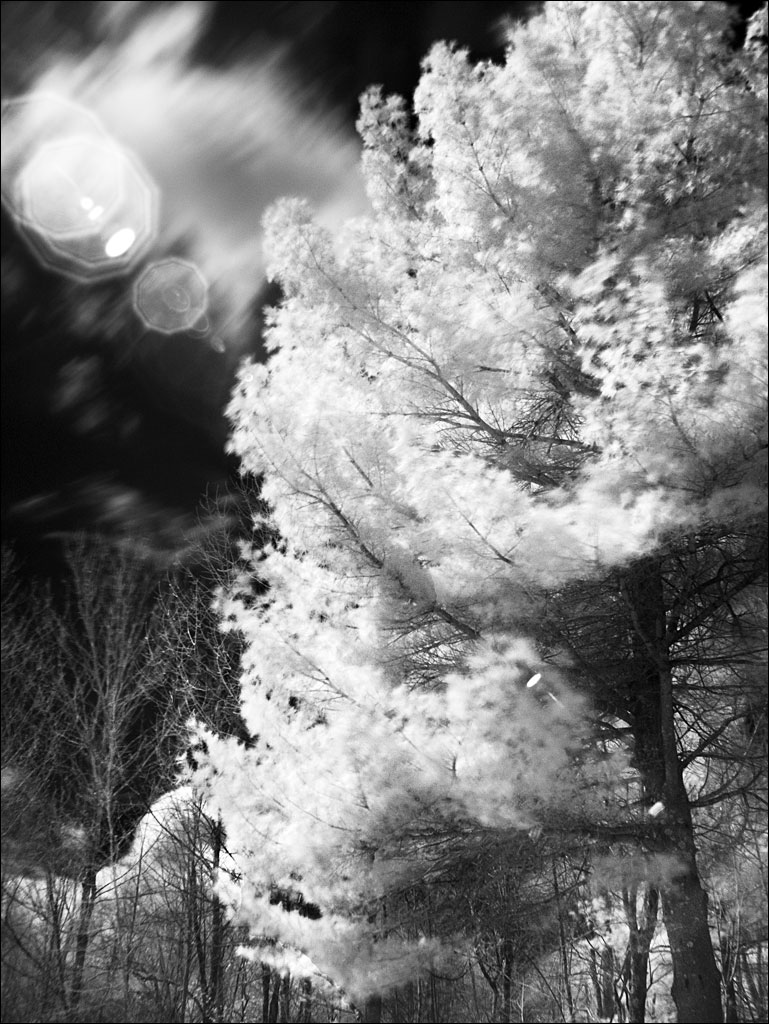 We have a beautiful Eastern White Pine just behind our house. The constancy of the evergreens through the winter gives a softness to that season, like a whisper saying that spring will return and the land will be green again. It is hardly surprising the pine is used to symbolize time and eternity in many cultures. Click on the image for a larger view.
We have a beautiful Eastern White Pine just behind our house. The constancy of the evergreens through the winter gives a softness to that season, like a whisper saying that spring will return and the land will be green again. It is hardly surprising the pine is used to symbolize time and eternity in many cultures. Click on the image for a larger view.
Fern Fronds
Summer Sky
Cloudscape
St. John’s Wort—Edible Weeds
 St. John’s Wort, Hypericum perforatum, is native to Europe, but is found in abundance in the US. In some places, it is considered a pernicious weed. If you introduce this plant to your garden, it can be hard to control.
St. John’s Wort, Hypericum perforatum, is native to Europe, but is found in abundance in the US. In some places, it is considered a pernicious weed. If you introduce this plant to your garden, it can be hard to control.
We use the leaves and flowers: fresh for salads and dried for tea. St. John’s Wort is said to help mild depression. We find the tea very relaxing.
Some people can have a reaction to St. Johns Wort—nausea, diarrhea, headaches, photodermatitis—and it can interfere with some medications; please consult your doctor. Always research plants you intend to consume. You should consider our posts a starting point, not a definitive source of information.
Heaven and Earth
Purslane—Edible Weeds
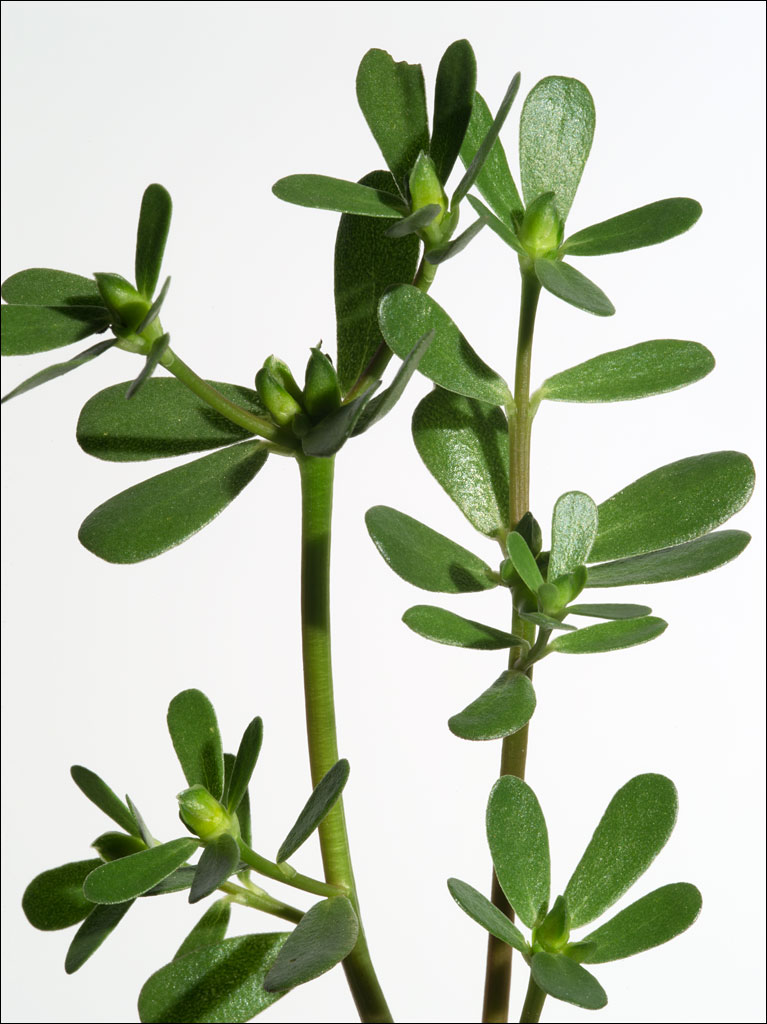 Purslane, Portulaca oleracea, is known as pursley in Maine. The stems and leaves are edible. The seeds can also be used for flour. Purslane can be cooked like spinach. Like spinach, it is rich in iron. We like to use it fresh in salads and smoothies. Unlike many wild plants, Purslane is not bitter and the leaves have a wonderful texture.
Purslane, Portulaca oleracea, is known as pursley in Maine. The stems and leaves are edible. The seeds can also be used for flour. Purslane can be cooked like spinach. Like spinach, it is rich in iron. We like to use it fresh in salads and smoothies. Unlike many wild plants, Purslane is not bitter and the leaves have a wonderful texture.
WARNING: Purslane can be confused with the poisonous hairy-stemmed spurge. As the name suggests, this plant has a hairy stem. A milky saps is discharged when a stem cutting is squeezed. It is important to refer to guidebooks or local foraging experts to identify plants. Please look at our posts as starting points, not as definitive references on plants.




